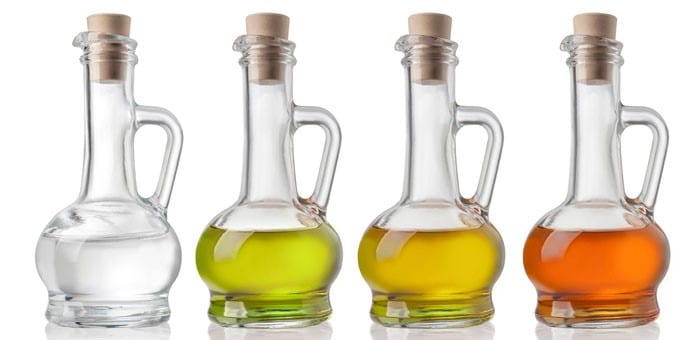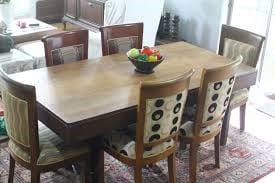Wood is a common building material for floors, walls, and furniture. It is no wonder that this renewable material is used for various purposes. However, given the fact that it is most valued in many uses, wood has become susceptible to dents, scratches, and other damages. What causes these marks and dents is due to high-traffic areas in the house.
However, there is a common household item that you can use to remove annoying scratches and marks. These household items are vinegar, lemon, and toothpaste. This guide will demonstrate how to use these items to remove stains from wood, like scratches, dents, and blemishes.
Things you will need
- Vinegar
- Baking soda
- Lemon oil
- Toothpaste
- Cooking oil
- Soft cloth or rags
- Soft-bristle toothbrush
Vinegar: The Power of its Acidity
As a common household cleanser, vinegar is effective at removing stains on wood. Scientifically, white vinegar has 95% water and 5% acetic acid, and the small percentage of acid in this item makes it simple to naturally remove stains, markings, and grime.
However, a stronger solution of white vinegar is required to fix minor scratches with the help of oil. Their mixture produces the desired result, which regular vinegar use does not. Acetic acid can harm the finish of wood if used in excess or at high concentrations. However, when combined with oil, the damage is significantly lessened.
Step 1
In a bowl or cup, combine 1/2 cup of white vinegar with 1/2 cup of cooking oil. For the best outcome, keep the mixture’s ratio at 1:1.
Step 2
After thoroughly blending, dip a delicate cotton rag into the cup to ensure it is saturated with the mixture. Immediately after dipping, squeeze the rag to remove any extra liquid.
Step 3
Apply the moistened rag to the damaged part of the wood surface. Work in the direction of the grain as you circularly rub the cloth.
Step 4
Give the mixture two minutes to work on the surface. In this way, the wood is moisturized, and the fissures are filled in by the oil, which also lightens the color of the scratches.
Step 5
Grab a clean, dry rag to wipe the extra solution off. Check if the surface is clean and free of any further residue. Buff the surface with the rag until it shines.
Lemon: The Power of its Restoration
Lemon juice effectively works on minor or surface scratches. This scratch refers to a slight scratch that only affects the finish and does not go through to the wood beneath. Now when combined with oil, lemon juice provides a potent remedy for surface scratches with its power to restore color just like vinegar.
Step 1
Make a solution by combining equal quantities of lemon juice and vegetable or olive oil. The mixture should be applied on a lint-free fabric.
Step 2
Over the scratched area, rub gently but firmly enough to remove scratches on the wood. Avoid rubbing the wood too rough because this could harm the finish. Rub until the mark is no longer visible while following the wood grain.
Step 3
To wipe extra oil off the surface, use another clean cloth. If required, repeat the procedure until all marks have been successfully erased.
Toothpaste: The Power of its Gel-like Consistency
Another effective method for removing stains and scratches is toothpaste. Its gel-like viscosity makes it effective as a cleanser, scratch remover, and dark water stain remover.
Applying a small amount directly to the affected wood surface will be sufficient. You can combine it with baking soda equally for a more effective result.
Step 1
Apply a small amount of toothpaste to the affected surface, then gently remove any stains using a soft-bristled toothbrush. Work slowly in the direction of the wood’s grain without too much rubbing, as it may damage the wood finish.
Step 2
Use a moist cloth to wipe away the toothpaste after gently massaging it into the wood surface. Give the area time to dry completely.
Step 3
Apply a coat of furniture polish to the area using a clean, dry cloth to add extra gloss and protection. Repeat the procedure as necessary if the scratch marks are still visible.
Bonus: Removing scratches using other alternatives
We do not want you left hanging if you are unsatisfied with the above inputs. Here is what we got for you: a list of alternatives you may consider in removing scratches on wood. Let’s start!
Walnut
Although it takes a few minutes to give effect, the walnut oil does fairly well in coloring the affected wood surfaces. The coloring from the nut oil hides scratch marks and stains and expands the wood. To do this method:
- Simply crack a walnut in half.
- Rub the meat part of the walnut on the scrape.
- Continue rubbing until you see a visible result.
Note: Although the outcome may seem insignificant initially, you will hardly notice the scratch after five minutes.
Crayon
Looking for a temporary solution to a problem? Well, you can use crayon to conceal scratches on wood. In other words, the scratch would be properly covered up while remaining visible. The good thing about crayons is that they can mix and match with the wood color, resulting in the seemingly spotless concealment of common wood stains like dents and scratches.
Furthermore, most crayons are food-safe and non-toxic, so you may use them on your dining table without getting everyone’s health at risk. To do this method:
- Choose a crayon of the same color as the scratched wood.
- Fill in the scratched area with color, then use your finger to rub the color into the finish.
- With the edge of an old credit card, remove any extra wax.
- Clean the surface using an extra cloth.
Black Tea
Using black tea as a scratch remover is another simple trick you can select from this list. But remember that only black tea will work, whereas green or herbal tea will not yield any satisfying solution for your wood problem. How do you use it, then?
- Place a teabag in a mug and then top it with boiling water.
- Give it a few minutes to steep.
Note: The tea bag will become darker the longer it is soaked. Therefore, you need to soak your furniture longer if it has a darker color.
- Now, apply the tea with a cotton swab to the scratches.
- With a paper towel, quickly wipe away any excess to prevent staining the surrounding area.
Note: Avoid letting the tea sit on the wood for too long if the water seeps into the wood because it will result in additional stains or wood issues.
Mayonnaise
Mayonnaise is the last one on the list, which is also a tried-and-true method for removing water stains from wood. It does an excellent job of repairing cracks and scratches, especially on hardwood floors, thanks to the presence of proteins and fats in mayonnaise that encourages the wood to swell and moisten the surface.
- Clean the area and eliminate the dirt.
- Apply mayonnaise to the area with a tablespoon and let it sit there for at least 15 to 30 minutes.
- Remember to keep the area covered with a clean cloth and wipe it clean with a damp cloth.
Conclusion
Wood stains, such as dents and scratches on wooden furniture, walls, and flooring, are very predictable, which is why most pieces are stained and finished with lacquer or varnish. But if scratches persist, you exercise the right preventive wood maintenance measure to treat these right away and to avoid these stains worse.
Further Readings
Wood Types 101: Three Main Types & How To Identify
Help is Here: Inspecting Wood Infestation and Applying Best Solutions




